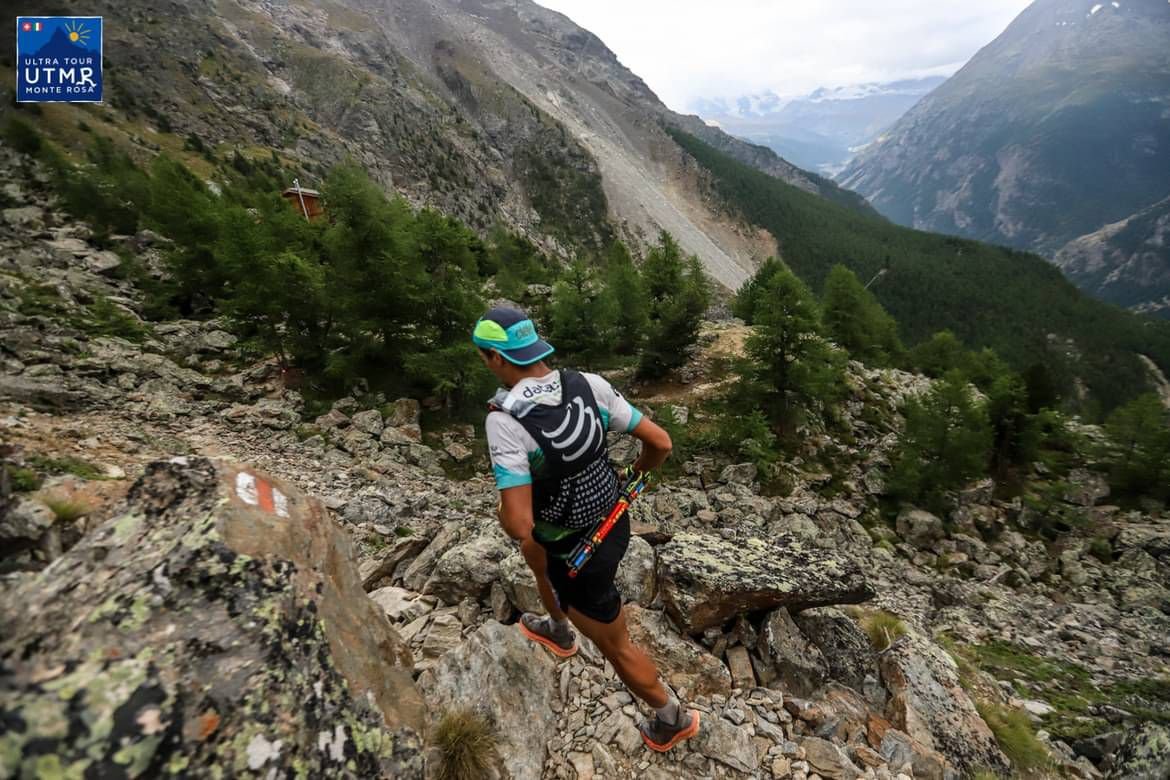Race, Recover, Repeat: The Unique Demands of Stage Racing
This autumn, ETT Athlete Catalin raced and won the Ultra Tour Monte Rosa Stage Race, a 171 km challenge split across 4 days in the Swiss and Italian Alps. Although some course changes and cancellations were needed to adjust for the weather conditions, Catalin won every stage.
He prepared and raced in a way specific to stage races, so here we’ll review what stage races are, their specificities, and how Catalin addressed them. Read on to get some tips on preparing your next trail running stage race, too.
© Ultra Tour Monte Rosa
What are stage races & why are they different from ultramarathons?
Unlike ultramarathons, which describe any race that surpasses the 26.2 miles / 42.195 km of the marathon, running stage races can be made up of multiple runs spread across several days. Stage distances vary greatly, with each stage race having its own unique distances and challenges. Stage races are usually at least 3 days long.
Some key elements of trail running stage races that differentiate them from an ultra include:
Managing recovery post-stage - This can be challenging, depending on how much time you have every day once you finish the stage. You need to ensure you take care of your body, kit, and nutrition, and that you have enough rest to start fresh the following day.
Accumulation and impact on your body - While in an ultramarathon that may take 24 hours or more, you keep moving (even at a slower pace, or with naps included!), the stop-and-start nature of multi-day stage races takes its toll on the body differently. Your feet will have time to swell (and deflate!) and you may need to manage blisters or chafing differently after a night’s sleep, among other things.
Community - In an ultra, you may run with one or more people for a stretch, but either you or they will eventually pull away at their own pace. You may never see them again, depending on your eventual finish time. In stage racing, people see each other at every start line at the very minimum (sometimes, they sleep in the same camp together, so will also socialise in the evenings). This creates more of a community feel and can lead to unique experiences and new friendships.
Results are based on the overall finishing time, not on any one day’s performance. This means that certain runners can plan to race hard on days where the profile or the conditions suit them better, thus taking a tactical approach to the event. This also means that you need to pace yourself in a balanced way, always remembering there are a number of days left of racing, but also using this to your advantage if you’ve had a difficult stage.
Ultra Tour Monte Rosa 2024
Taking place every September in the Swiss and Italian Alps, the Ultra Tour Monte Rosa allows runners to discover amazing scenery in challenging conditions and on tough and technical terrain. The stage race format splits the 171 km of the full loop into 4 days, typically between 37 km and 46 km in length, with an average of 3300 m of ascent.
The 2024 edition unfortunately had to cope with some difficult weather, which led to the cancellation of the second stage, route changes, and a shortened fourth stage. Catalin completed:
Stage 1: 36 km and 2115 m of ascent
A shakeout run after a bus transfer on day 2
Stage 3: 46 km and 3200 m of ascent
Stage 4: 20 km and 1377 m of ascent.
Catalin’s UTMR Experience
Catalin already had experience of stage races, but he decided to still simulate the event in advance by completing three races at the Bucovina Ultra Rocks event in the summer, throughout consecutive days. This allowed him to test his recovery strategy, however, developed with our team high performance dietitian, Rebecca.
“Running in the Bucovina Ultra Rocks Triple Crown Challenge also gave me an idea of the effort I would have to put in to lead in the race,” says Catalin. He decided on a race pace that would use both heart rate and rate of perceived exertion on the uphills. However, since the UTMR descents are steep and technical, we also worked out a strategy based on focus and RPE, paying close attention to maintaining the quads for the full duration of the stage race.
“We also developed a training plan with the goal of having Catalin ready to run at his best effort level for 4 consecutive days,” says ETT Performance Director Doug. Catalin practiced running fast, using poles, and doing back-to-back long runs with full race kit. He enjoyed a month of weekend back-to-back long days out, which prepared his legs to take on high running volume during the UTMR.
Nutrition was also an important aspect. Catalin trained his gut to take on 120 g carbs per hour, around 1 litre of fluid and 750 mg of sodium. This feels like his perfect race fuelling strategy at the moment, with no risk of digestive issues or low energy during the run.
Team dietitian Rebecca also put together a post-stage recovery plan which included consuming a recovery drink and rehydrating with electrolytes immediately after every stage. This helped Catalin replenish lost glycogen and salts, but also improve sleep and recovery over night.
As for sleep, it was important to not take on too much caffeine during the race - despite looking for the performance benefits. So, Catalin limited himself to a maximum of 100 mg of caffeine every day, so he could unwind fully after each stage and get a good night’s sleep. He also optimised sleep quality by using an eye mask and ear plugs, to fully tune out any noises and distractions.
© Ultra Tour Monte Rosa
Our top tips for preparing a stage race
If you’ve signed up for a stage race or are considering running one in the near future, here are some top tips from our ETT Performance Panel:
Prepare for consecutive days of high-volume and/or high-intensity racing:
Condition your legs with back-to-back long runs with as close as possible to the race’s metres climbs to km ratio
Plan longer days of hiking in the mountains, possibly hut-to-hut expeditions of 2-3 days to get used to being in an environment similar to that of your race (you can do a recce to prepare even more thoroughly!) and wearing a heavier pack to strengthen your back and shoulders
When doing your back-to-back long runs, practise post-stage recovery (as if you were in the race):
Experiment with the best mix of recovery shake / post-run meal for you (including a good mix of carbs and protein)
Consume tart cherry juice either immediately after your run or before bed to boost recovery
Ensure your rehydrate with electrolytes
Experiment with nutrition:
Some people start to get sick of gels and/or energy drinks during long events such as a stage race, so prepare for the eventuality that will stomach will ask for nutrients in different shapes - try out wraps / sandwiches / real food purées during your multi-day adventures to see what works
The same can happen for your recovery meal or breakfast, so have multiple options ready for the stage race itself
Create a post-stage winding down routine and stick to it (write it down if it’s easier to tick off actions and make it easier to remember / less pressure during the event):
Take your shoes and socks off right after you finish, especially if there’s a transfer to your accommodation, and put on flip flops to let the feet breathe
If needed, attend to any blisters or hot spots after drying your feet
Put your feet up while travelling to your accommodation if you can
Have a recovery shake right after you finish
Start rehydrating right after the run
Attend to any chafing / blisters / hot spots
Eat a nutritious dinner with lots of protein and carbs to sustain your following day’s effort
Keep sipping on water / electrolyte drink
Prepare the next day’s outfit and nutrition / kit before you go to bed, so you aren’t rushing in the morning (do a final weather forecast check)
Spend as much time as you can off your feet, relaxing, and unwinding (stay off social media / your phone)
Create a pre-stage routine and write a list you can tick off every morning so you know you haven’t forgotten anything. This keeps your mind at ease and avoids errors as you get more tired in later stages.
Conclusion
To secure the victory at the UTMR stage race, Catalin focused on a clear recovery routine after every stage, plus a well thought-out training and nutrition plan in the weeks leading up to the race. He simulated the multi-day nature of the event and the elevation / distances and he had a pacing strategy that took into account the demands of the race to ensure he stayed competitive every day.
When preparing your multi-day stage race, ensure you make your training as specific as possible to the demands of the event, while making your race days as simple as possible by preparing lists and routines so you’re never second guessing yourself.



